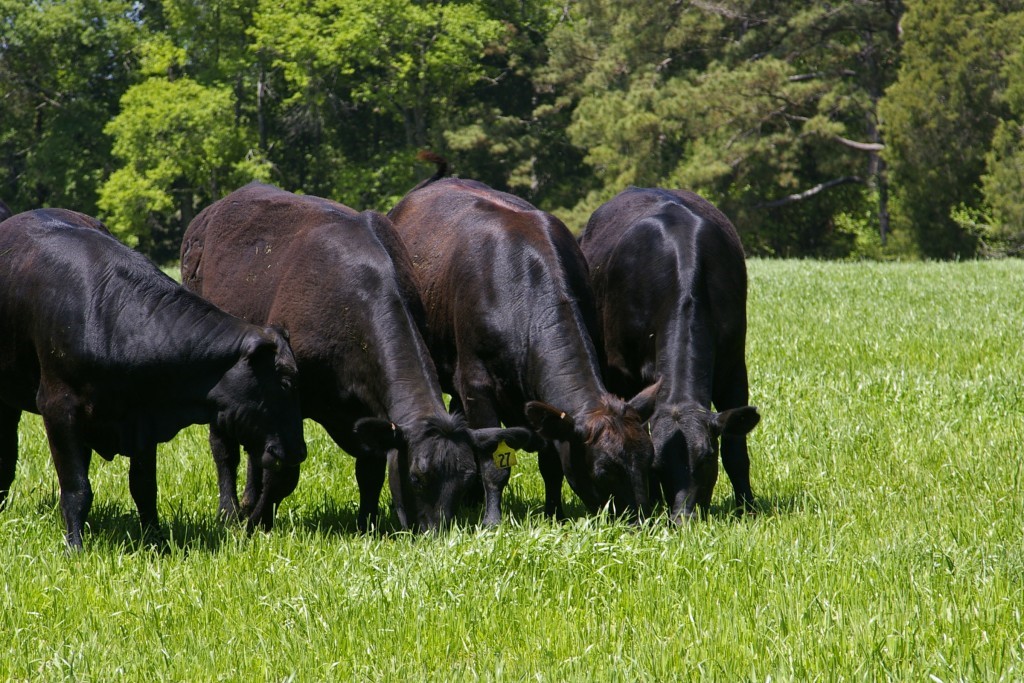Growing Good Food - Naturally
Grass Facts
We are a grass-fed and pasture-based farmer because I believe it is the most respectful way to raise animals and to increase the carbon cycle on our farm. As a group of passionate grass farmers, we raise our animals outside on pasture, in a grassy field, not in a barn.
Our cattle enjoy their lives out on the pasture grazing and roaming the various pasture fields on our farms. They are converters of grass, it is why cattle, who are true herbivores, have four stomachs to break down grass. They are great at converting grass into many useful foods for us to enjoy.
Our beef is 100% grass-fed. This means they are fed fresh grass/pasture in summer, and in the winter they are fed hay, which is cut and dried grasses and pasture plants. These plants are stored in bales and in silos to be fed to the animals in the winter months. Silos are tall round towers that are used to stare large quantities on feed without taking up a lot of valuable grazing land. The pastures hay fields are fertilized naturally with composted manure and not sprayed with herbicides or pesticides.
Each large bale of hay will weigh approximately 500 to 800 kg.

Did you know a fully grown and pregnant beef cow will eat approximately 10 bales of hay for one winter? Farmers plan for this to be 6 months, because we live in Canada, and who knows what each winter will bring!
Grass-fed beef are generally a little smaller in size and a bit older when ready for processing, and leaner than conventional beef. At processing, the animal is between 24-28 months, instead of 15-18 months as conventionally raised, corn-fed or feed lot beef. This ensures each animal is on pasture for two seasons, lending to the great flavour and texture of grass-fed meats.
Grass-fed beef from heritage breeds of cattle marbles naturally at around 24 to 30 months. Marbling refers to the fat being distributed in the muscle, and not just under the skin, and increases the tenderness and flavour of the meat. Other breeds marble and mature a little sooner, but they tend not to be as good at converting pasture grasses into protein. Heritage breeds are more efficient at converting grass to meat.
There are many environmental and health benefits to eating grass-fed beef. Grass fed meat is leaner than corn feed beef, which means the meat has less fat. The meat has a finer texture, are raised longer and have a unique taste! Grass fed beef also has 50% less saturated fat than conventional feedlot beef, but more Vitamin E, beta carotene and Vitamin C. For more info on the health and environmental benefits of grass-fed food, check out www.eatwild.com.
Pastured meat offers a good source of Omega 3 fatty acids and less cholesterol. A less risky choice for people who suffer from gluten or wheat allergies and contains good cancer fighting CLA's that minimize free radicals.
Pasturing animals is beneficial to the environment as it reduces the use of pesticides and herbicides used and maintains a steadier carbon cycle than when grain crops are planted. Fence lines to keep the animals in becomes a home to pollinators and many creatures, encouraging diversity in our environment.

Grass is sunshine converted into food and the cattle eat it to grow. To us, eating grass-fed beef is like eating an accumulation of sunshine. More info about the environmental and health benefits of grass-fed meat can be found at a great website, www.eatwild.com.